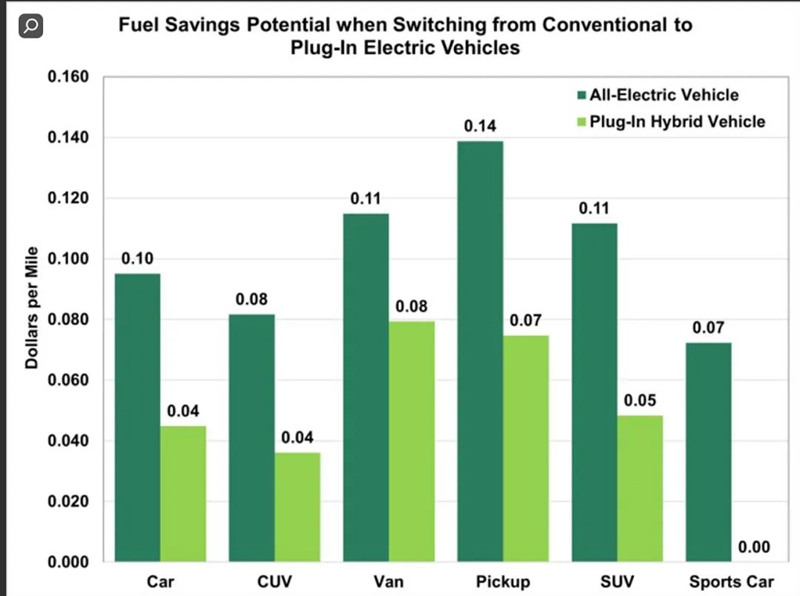- English
- Español
- Português
- русский
- Français
- 日本語
- Deutsch
- tiếng Việt
- Italiano
- Nederlands
- ภาษาไทย
- Polski
- 한국어
- Svenska
- magyar
- Malay
- বাংলা ভাষার
- Dansk
- Suomi
- हिन्दी
- Pilipino
- Türkçe
- Gaeilge
- العربية
- Indonesia
- Norsk
- تمل
- český
- ελληνικά
- український
- Javanese
- فارسی
- தமிழ்
- తెలుగు
- नेपाली
- Burmese
- български
- ລາວ
- Latine
- Қазақша
- Euskal
- Azərbaycan
- Slovenský jazyk
- Македонски
- Lietuvos
- Eesti Keel
- Română
- Slovenski
- मराठी
- Srpski језик
US electric vehicle fuel cost savings potential is $10,000 per 100,000 miles
2024-06-29
The larger the vehicle, the greater the potential for fuel cost savings. One of the main benefits of electrified transportation is lower energy costs compared to fuel costs. Cost savings potential varies by vehicle category.
According to Argonne National Laboratory's report, "Adopting Plug-in Electric Vehicles: Local Fuel Use and Greenhouse Gas Reduction Across the U.S., the larger the vehicle, the greater the potential for fuel cost savings in general. This is because larger vehicles consume more fuel than smaller vehicles."
The Department of Energy's Office of Vehicle Technology has highlighted the estimated fuel cost savings potential of Argonne National Laboratory for replacing gasoline vehicles at the zip code level with electric vehicles of the same size (fully electric or plug-in hybrid) in order to eliminate energy/fuel cost differences between states when calculating the national average.
Pickup trucks have the greatest potential to save on fuel costs when the data is aggregated at the national level - about $0.14 per mile when replaced by electric vehicles.
The next two vehicle types are vans and SUVs at $0.11 per mile. If vehicles are replaced by plug-in hybrids (PHEVs) only to partially reduce fuel costs, the potential for cost savings will be greatly reduced.
The potential for fuel savings when switching from conventional electric vehicles to plug-in electric vehicles is as follows

Interestingly, the regular car has almost the same full cost savings potential of $0.10 per mile as the van and SUV. The savings are estimated to be the lowest for the crossover utility vehicle (CUV) and the sports car. By the way, the PHEV version of the sports car is reported to have "less than $0.00 in savings" (less than 1 cent, as far as we know).
Assuming an average savings of at least $0.10 per mile for most vehicles in the country, including cars, SUVs, vans, and pickups, we're talking about at least $30 per 300 miles, or just $100 per 1,000 miles. After 100,000 miles, the savings should be over $10,000.
Ultimately, full electrification is needed to unlock the full potential for fuel savings. However, it may take time for the automotive industry to be ready to develop fully electric equivalents across all vehicle classes and offer mass adoption at an acceptable price. This is more focused on some applications than others - for example, pickups with remote towing capabilities are challenging.
------------------------------------------------------------------------------------------------------------------------------------------------------------------------------------------------------------------------------------------------



